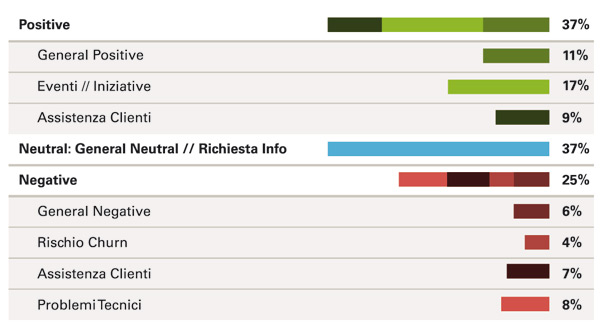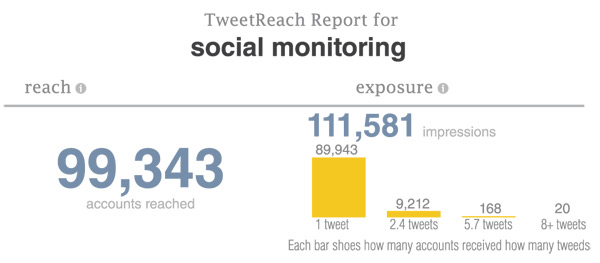The web has a more and more significant weight in the relationship between household appliance producers and their customers. A proactive strategy of customer care socials needs the development of channels, applications and activities of relationship with customers to meet their requirements, even if they haven’t directly submitted them to the enterprise.
Nicola Saccani, Brescia University – ASAP Service Management Forum
Some time ago the household appliance discovered social networks. The most curious case (and interesting, as example of collaborative consumption) is the social “La machine du voisin” devised by some French guys, which allows identifying whether in one’s own area there is a private citizen who puts at disposal his washing machine for people who haven’t it, complete with the owner’s availability schedule.
If consumers are so active in inventing new solutions, they are as brisk in speaking of their experience with products and brands on the web. On a global scale, entertainment, consumer electronics and household appliances are the product categories where the influence of social networks is stronger. Some surveys report that the impact of the customer service on choices is impressive: 70% of customers stop buying the products of a company after a negative experience or the lack of customer service, and many of them will talk about that in internet. The companies operating in these sectors are not so fast and creative as their customers in the use of social networks, yet, even if an analysis presented last year by the Brands & social media Observatory of the Cattolica University identified Nokia as the company best positioned in the field of technical consumer goods.
The interconnections between people and the evolution of technological instruments generate an exponential growth of the quantity of circulating information and of their diffusion. Filtering and discerning those information is increasingly important for the companies that operate in consumer markets. The customer is in fact more and more active not on the traditional customer care channels made available by the company but “where he likes”, that’s to say on the most various social networks, forums and blogs. New disciplines and practices derive from this phenomenon: the social intelligence and the Social Customer Relationship Management (s-CRM). A recent American research reveals that only 13% of the big United States companies believe they use social media properly. The main reasons for the use of social media are three: to enhance the brand awareness (87% of cases), to increase the web traffic (62%), and to improve one’s own Reputation (61%). But is it convenient to use social networks badly? A research carried out by Oracle few months ago argues that because of an unsatisfactory customer experience companies can lose 18% of their yearly turnover and, even if they are fully aware of it, they find it hard to develop specific strategies. As a matter of fact, only 36% of interviewees are starting a formal initiative for the customer experience and only 20% believe that their situation thereupon must be improved, and in the attempt of doing that.
Francesco Grigolo, Innovation director of E-Care, company specialized in CRM and Contact Center Services explains us the role of social networks and of Social CRM strategies, illustrated during a recent workshop of the ASAP Service Management Forum. “The networks more oriented to customer service, and then essential for observation, are Facebook, due to the very high number of registered users, and Twitter, for the communication speed. There is however a galaxy of social networks, blogs and forums, even strongly specialized, where “hide” users that exert a strong influence degree on other consumers, who should be monitored. Users with high number of connections, in fact, amplify the exponential effect of the information diffusion on the web and, if they speak ill of a brand or of a product, they can determine strongly negative effects”. Besides, social networks are becoming an important channel for the customer service: according to the “Social Media Report 2012” by Nielsen, about the half of United States consumers contact brands to express satisfaction, to send complaints or to request information. One user out of 3 declares that he uses more willingly social networks rather than the phone or other media. To develop a strategy of customer care or CRM that uses (also) the social world can become a critical factor of success for a company.
What are the essential steps of an s-CRM strategy? Three, which can be summarized by the words Listening, Profiling and Action.
LISTENING: it means to monitor what happens on the ”socials”. “Even if a company covers its ears”, says Grigolo, “consumers talk anyway in internet”. Listening is an essential stage, not only to know how much but also how users speak of the company. “Today this phase is quite diffused in the world of consumer goods, even if not all companies have an adequate cover of the social world, and most of all an adequate capability of discerning the content of the discussions. Complex software allow ‘mapping’ social networks and discerning how much and how they talk about a brand through ontological, semantic and statistical motors.”
PROFILING. It consists in understanding where (which communities) and how our customers talk to define a response strategy. What is, for instance, the “reach”, that’s to say the diffusion level of the messages “twitted” by our customers? What are the socials where users are more active in talking about us? Which are the users who speak of our brand and have greater capability of influencing other users (thanks to the big number of connections)?
ACTION. Monitoring and understanding is not enough. A proactive strategy of customer care socials calls for the development of channels, applications and activities of relationship with customers to satisfy their requests, even if they haven’t directly expressed them to the company. “In comparison with the traditional CRM, the evolution towards the social CRM places customers at the beginning of the decisional chain of product, service and customer care”, reminds Francesco Grigolo. The creation of a stricter and more continuative relation with customers increases the satisfaction level and generates a direct involvement, where the customer is not only input of the process but comes into play in a collective manner, contributing in generating the brand value. Therefore, we find companies that create specific customer care channels on Twitter, web applications of customer service coupled with their Facebook page, specific mobile applications etc.
The practices of the social CRM allow then recovering unsatisfied customers that would have been lost, not having otherwise their trace, but also avoiding the negative influence that the diffusion (exponential!) of their opinions by means of social networks might generate. All that opens however many new chapters for the company: from the competences of those who manage these channels, to the organizational models of the customer care, to the definition of processes and to supporting instruments. The latter, in a period of great attention to costs, can prove to be a winning weapon. The activation of social channels, besides the already mentioned advantages, permits also to reduce the contact volumes through traditional channels (ex. contact centres), enhancing the efficiency of customer service processes. Pursuing the same goal, companies can develop Mobile Apps and Web Apps through which customers can autonomously carry out customer service operations. Lots of opportunities, much necessary experimentation in a constantly evolving context: also the social way can bring differentiation and competitive advantage to producers and resellers of household appliances.








